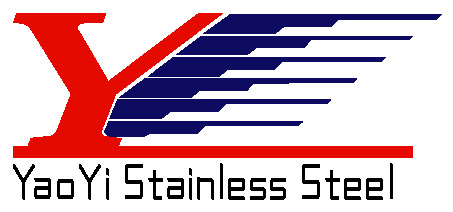A few days ago, my client asked me a question. He said, “Ewan, I want your stainless steel coil to be resistant to acid and alkali and 700 degrees. Can you do it?”
I answered him: “Of course you can. I passivate the product I sell to you so that it can meet your requirements.”
I find that many customers don’t know what is passivation? How it should operate, so today I will introduce you to the stainless steel passivation process and the role it can play.
First of all : Why do we passivate
The passivation treatment of stainless steel is mainly a rust and corrosion prevention process because the stainless steel material undergoes a variety of processing (welding, turning, stamping, etc.), the crystal structure and surface roughness of the stainless steel material will change. Therefore, rust prevention performance is greatly reduced, resulting in stainless steel materials and easy rusting. Therefore, a passivation rust prevention treatment must be performed to improve the rust prevention performance of the workpiece.
The Second: the principle of passivation
The principle of passivation treatment can mainly be explained by the thin-film theory, that is, the passivation is considered to be due to the interaction between metal and medium, and a very thin, dense, good covering property can be formed on the metal surface when it acts. Passivation film, which can separate the metal from the corrosive medium and prevent the metal from directly contacting the corrosive medium.
The Third: the specific role of stainless steel passivation solution
Stainless steel passivation liquid can be used to treat various stainless steel workpieces. Passivation can effectively ensure that the original color of the workpiece is not damaged during the passivation process, does not change the size of the workpiece, and greatly improves the resistance to stainless steel salt spray.
The Fourth: suitable materials for stainless steel passivation solution
Stainless steel passivation solution is mainly used under normal temperature conditions, simple to use, soak at room temperature. It is usually suitable for 200 and 300 series stainless steels, and it can handle small and medium-sized stainless steel workpieces with large batches, large output and easy soaking, such as screws, communication equipment parts, stainless steel precision castings, small furniture, food machinery, digital electrical parts, hardware parts, etc. Can pass the standard neutral salt spray test for 48-1000 hours (the specific time depends on the material).
How to use stainless steel passivation solution
Friendly Tips: If it is the first time to use stainless steel passivation solution, it is best to read the relevant instructions before operation. Inexperienced people are best used under the guidance of professionals, and small batches are qualified for mass production.
The Fifth: Operation process
1. Degreasing and degreasing. Flush with water after cleaning to make sure the surface is clean.
2. Activation treatment. The immersion time is 2-5 minutes, and the rust, welding spots and other impurities on the surface of the workpiece are cleaned.
3. Passivation treatment. Key processes. Generally, the soaking time is 30 minutes. For the more demanding, the passivation time can be appropriately extended, and the more complete the passivation film.
4. Neutralize. The immersion time is 3 minutes to neutralize the residual chemicals of the workpiece to prevent corrosion.
5. Over pure water. Wash away any chemicals remaining on the surface of the workpiece.
The Sixth: matters needing attention
1. Stainless steel passivation liquid is used as the original liquid, do not mix.
2. Before carrying out any process, the workpiece must be washed clean, and the surface should not have any chemical residue from the previous process.
3. Do not splash the passivation solution on your eyes or face. If you accidentally touch it, rinse with water immediately.
The Finally: Allow me to introduce my company: Ningbo Yaoyi Stainless Steel Co. Ltd. was founded in 1996. Yaoyi covers an area of 50 acres, and near the Ningbo airport. Over the years, the company mainly produces and sells different kinds of stainless steel coils, tubes, and sheets. It also independently developed one kind of high tensile non-magnetic stainless steel-Y1 and one kind of hard magnetic stainless steel-Y6. Also, other products like SUS 201, 202, 301, 301Ni7, 304 and 316 and so on.
So, there is a demand for stainless steel, please contact me!

Hi there, just wanted to say, I enjoyed this article.
It was practical. Keep on posting!